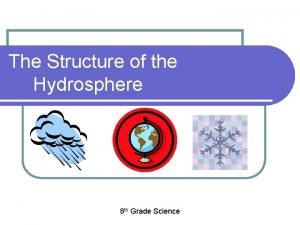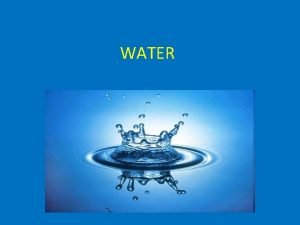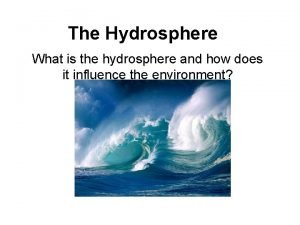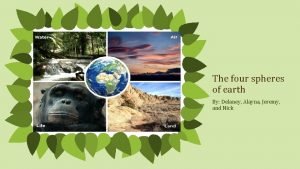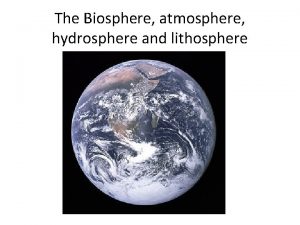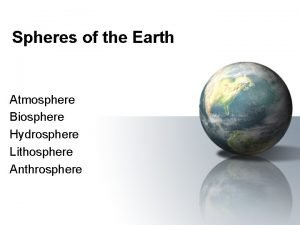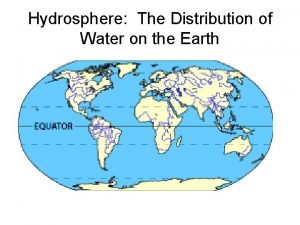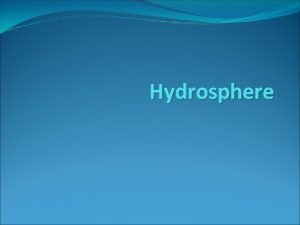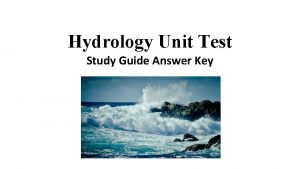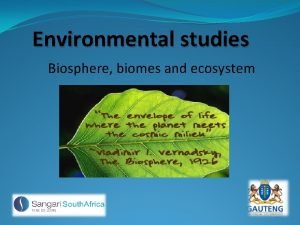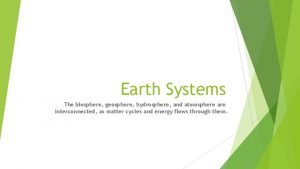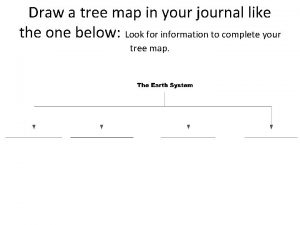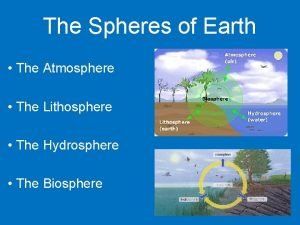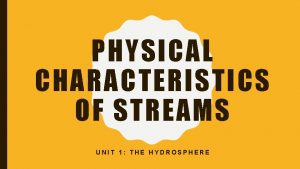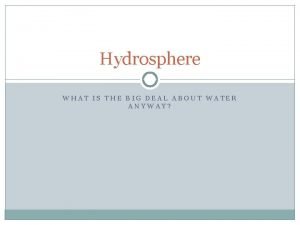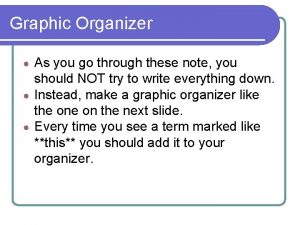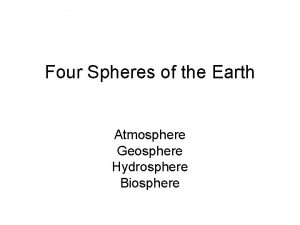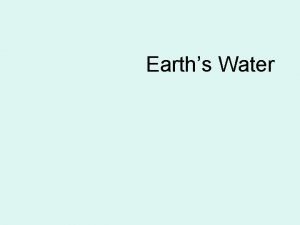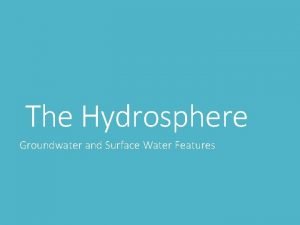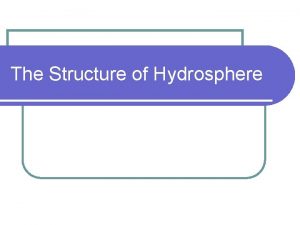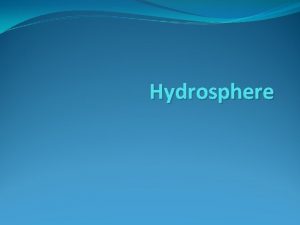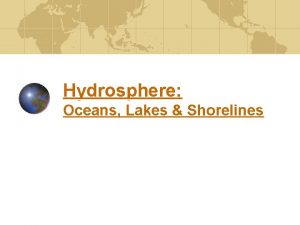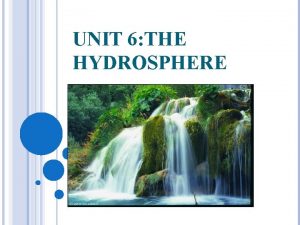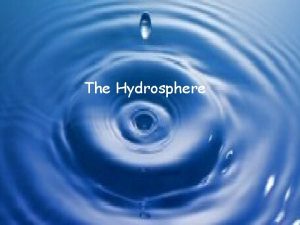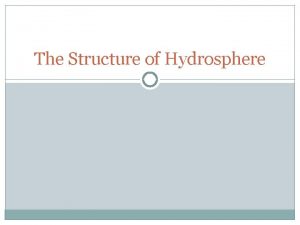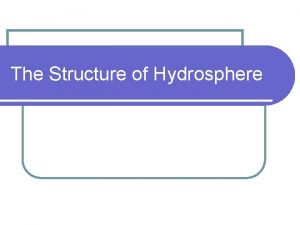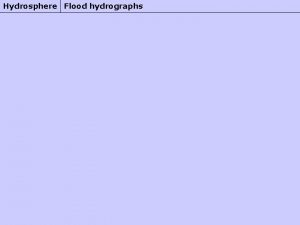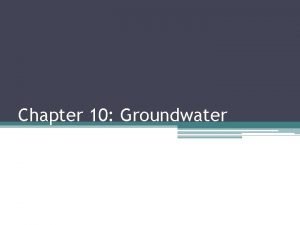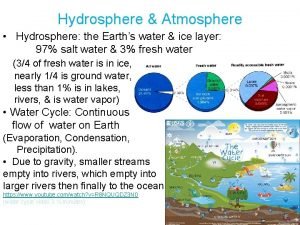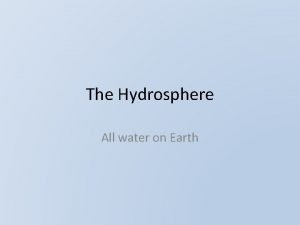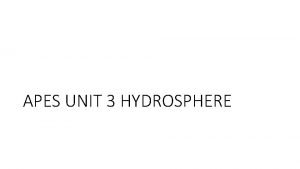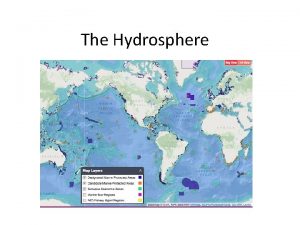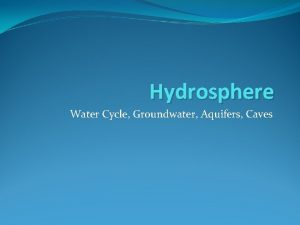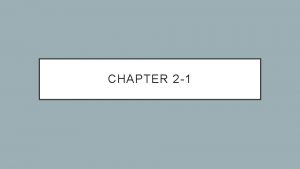The Structure of the Hydrosphere 8 th Grade



















- Slides: 19

The Structure of the Hydrosphere 8 th Grade Science

Blue Planet l ¾ of our planet is water, so it is called the blue planet.

The Structure of Hydrosphere l Oceans— 97% of water found here l Fresh water— 3% of water found here

The Structure of Hydrosphere l Fresh water distribution: l l Ice: 2. 3% Groundwater: 0. 4% Surface Fresh Water: 0. 05% Atmosphere and soil: 0. 05% Most of the fresh water is trapped in ice.

Understanding Where Your Water Is Located—Oceans and Ice l What bodies of water hold the largest amount of water? l Oceans—the largest bodies of water on Earth (contain salt water only)

Understanding Where Your Water Is Located—Oceans and Ice l What features house water as ice? l l l Icebergs: a large piece of freshwater ice floating in open waters Glaciers: any large mass of ice that moves slowly over land *permanent snow areas also “house” water as ice

Fresh Water Locations—Surface Water l What is the difference between a watershed and a river basin? l Both terms describe land that drains into a river, stream or lake River Basin: the term used to describe an area that drains into a large river l Watershed: the term used to describe an area that drains into a smaller river or stream l

Fresh Water Locations—River Basins and Watersheds l Larger river basins are made up of many interconnected watersheds l l Example: Cape Fear and Neuse River Basins are made of many small watersheds The water in a watershed runs to the lowest point—a river, stream, lake, or ocean

Fresh Water Locations—Rivers, Streams, and Lakes What is a river? l A large channel along which water is continually flowing down a slope—made of many streams that come together l What is a stream? l A small channel along which water is continually flowing down a slope—made of small gullies l What is a lake? l A body of water of considerable size contained on a body of land l

Fresh Water Locations-Groundwater What is groundwater? l The water found in cracks and pores in sand, gravel and rocks below the earth’s surface l What is an aquifer? l A porous rock layer underground that is a reservoir for water l

How water moves underground l Where does ground water come from? l Precipitation! Precipitation can evaporate, run off the surface or soak into the underground. l Water trickles down between particles of soil and through cracks and spaces in layers of rock.

Effects of different materials. l What are permeable materials? l l Materials that are full of tiny, connected air spaces, that water can seep through. What are impermeable materials? l Materials such as clay and granite that water cannot seep through easily.


Runoff l When rain falls on the land, some of the water is absorbed into the ground forming pockets of water called groundwater. Most groundwater eventually returns to the ocean. Other precipitation runs directly into streams or rivers. Water that does not get absorbed and collects in rivers, streams, and oceans is called runoff.

Water Zones l The area of permeable rock or soil that is totally filled with water is called the saturated zone. The top of that saturated zone is called the water table. l Soil and rock layers above the water table contain some moisture too, but here the pores contain air. They are not saturated. This is known as the unsaturated zone.

Wells A water well is a structure created in the ground by digging or drilling access groundwater in underground aquifers. The well water is drawn by a pump. l An artisan well is drawn up when water rises because of pressure within an aquifer. l

Other Surface Waters What is a wetland? l An area where the water table is at, near or above the land surface long enough during the year to support adapted plant growth l What are the types of wetlands? l Swamps, bogs, and marshes l Swamp: a wetland dominated by trees l Bogs: a wetland dominated by peat moss l Marshes: a wetland dominated by grasses l


 Structure of hydrosphere
Structure of hydrosphere Ten uses of water
Ten uses of water Images of hydrosphere
Images of hydrosphere Defintion of hydrosphere
Defintion of hydrosphere Hydrosphere lithosphere atmosphere
Hydrosphere lithosphere atmosphere How does biosphere interact with hydrosphere
How does biosphere interact with hydrosphere How is water distributed in the hydrosphere
How is water distributed in the hydrosphere The hydrosphere includes
The hydrosphere includes Hydrosphere study guide answers key
Hydrosphere study guide answers key Earth four spheres
Earth four spheres Hydrosphere layers
Hydrosphere layers Earth systems
Earth systems Hydrosphere concept map
Hydrosphere concept map Images of lithosphere
Images of lithosphere Characteristics of hydrosphere
Characteristics of hydrosphere Whats hydrosphere
Whats hydrosphere Ocean zones graphic organizer
Ocean zones graphic organizer Geosphere
Geosphere Stream load
Stream load Water permeable
Water permeable
